Editor’s Note: Kodomo-no-hi Children’s Day was originally published on May 29, 2009; we’re pulling it out of the archives for those of you who want to learn more about the flags you’ve been seeing all over Okinawa the past few weeks.
CONTRIBUTED BY STACI HAWLEY
If you see those lovely carp flying in the breeze, no doubt it’s swimming closer to Kodomo-no-hi, or Children’s Day in Japan. In the past, this holiday was referred to as “Boys Day”, but in 1954 the festival became known as Children’s Day. This holiday takes the day to reflect on the healthy growth of all children. According to a Chinese legend, the carp swam upstream to turn into a “strong and healthy” dragon.
Behold Calli and Sebastian proudly displaying their handmade carp from school.
When we lived in Sasebo, Japan it was quite common to see most homes adorned with koinobori. Nowadays more Japanese live in smaller homes or apartments, but you can still find small carp (either outdoors or indoors). The windsocks, actually called Koi noborubi represent carp swimming upstream. The parents hope that their sons will endure obstacles as they grow throughout their life, and become strong and confident. The number of carp on the pole are supposed to symbolize how many sons a family has.
I priced the carp at Jusco, and they are rather expensive. They range from 7,000 yen up to 30,000 yen. Our local exchange has a nice version (photographed above) for about $13.00.
Other traditions for Children’s Day are:
Gogatsu-ningyo – Families with boys put up a display of samurai helmets. You can purchase this one below at Jusco for about 400,000 yen.
If that’s too much for your budget, you’ll see a plethora of carp-covered greeting cards for around 400 yen.
Side note for the ladies: Don’t worry – girls have their own special holiday called Hina Matsuri (Doll Festival), which is held on March the third.


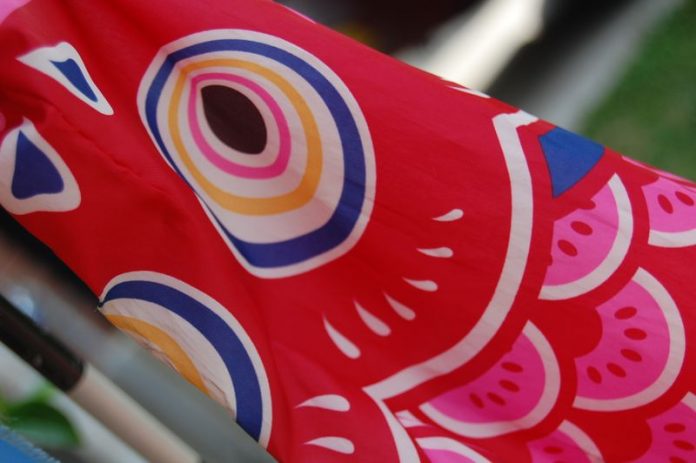
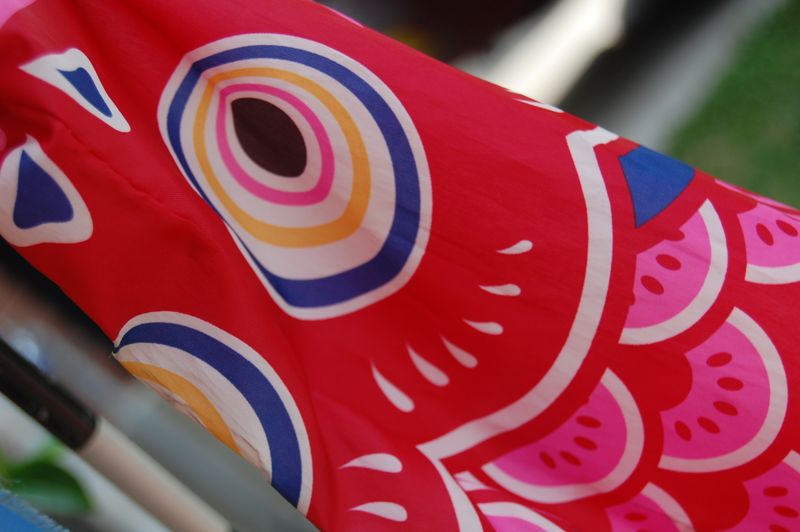
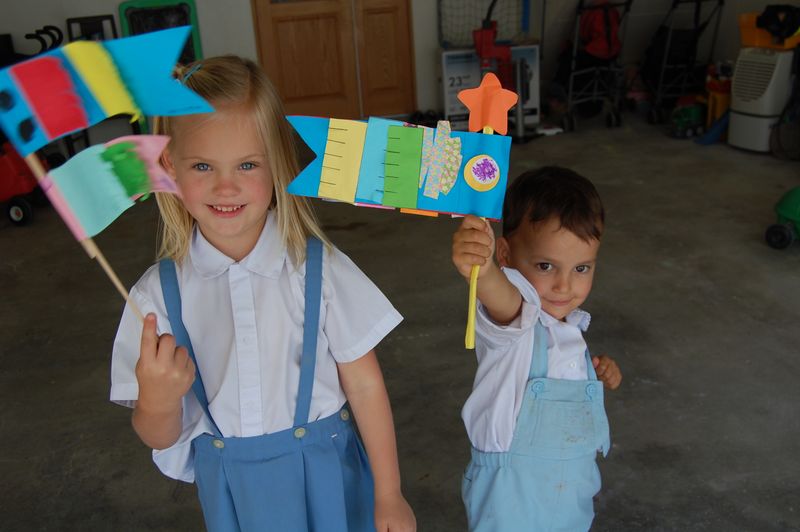

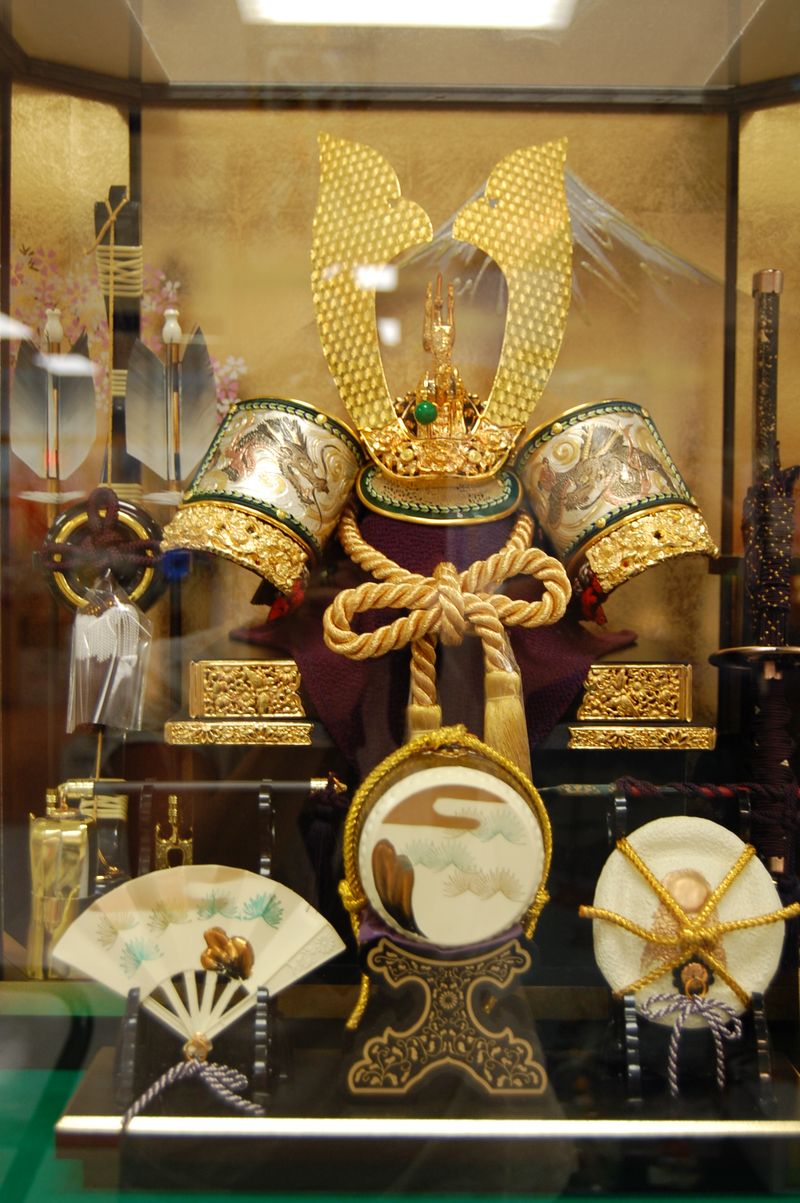
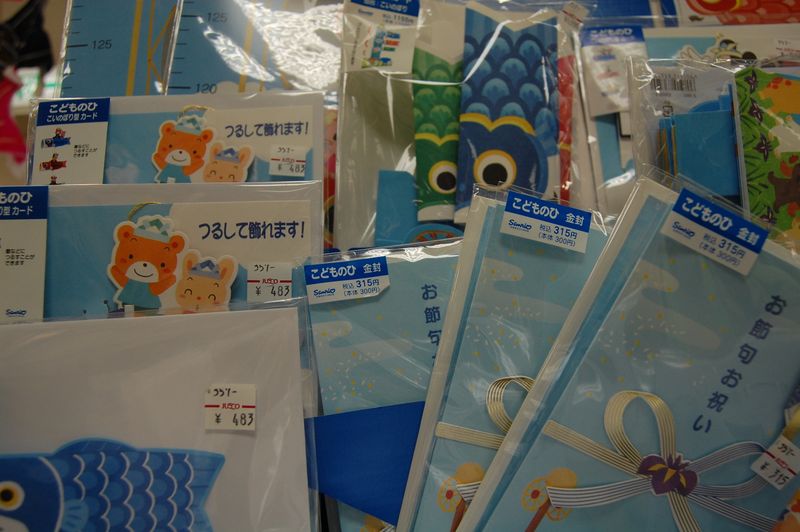
After i finish reading wonderful your blog. I appreciate about its very good content
Japan is sure diffrent…While living on okinawa wondered too what those things were but growing up in hungary childrens day is for both girl and boy and usually there is a lot of kid activities happening Discounts for zoo , parade`s , amusement park discounts …It is one special day when all kids can do and get on whatever day want…Gosh….Miss those days…
The various Japanese holidays in many ways reflect some primary cultural aspects of Japan that most Americans find quite different from those in the United States.
Did you know that March 3 is Girl’s Day in Japan, traditionally called Doll Festival, Hina Matsuri (ひな祭り, or ひなまつり)? Well, of course you did because you check the OKI HOLIDAYS section of this Okinawa Hai webpage. It is that peach colored box on the left side column.
Speaking of peach, that is another name for this holiday, momo no sekku (peach flower festival). Although Girl’s Day is not a national holiday in Japan, it is an important tradition in wishing happiness and good health to girls.
There are many websites which have a plethora of information, tidbits and fun things about the Hina Matsuri, Girl’s Day Festival. You can use any online search engine, however, you may have noticed that Google Japan had that pretty graphic of a traditional Emperor and Empress doll on a red carpet display for the Google logo on March 3, 2011. You just had to click on that special logo and a list of webpages specifically discussing this holiday appeared in the search results. You can view the logo by searching images for it.
So perhaps you already knew about Hina Masturi and the various traditions that go with this centuries-old celebration. But did you know in Japan March 3 (3/3) is also EAR DAY? That’s right, Mimi-no-hi (耳の日), was started in the mid 1950’s.
Ear Day? That just may not ‘sound’ right. However, this day was primarily chosen to “celebrate” the ear because the number 3 is thought to closely resemble the shape of a human ear. Also, when counting certain things in Japanese, MITSU is the word for three. So 3/3 could be mitsu/mitsu, or shortened to Mimi, the Japanese word for ear.
The other primary reasons this day was selected for honoring the ear are that Alexander Graham Bell, the inventor of the telephone (which requires the use of your ear and mouth), was born on March 3, 1847 and on this day in 1887 Anne Sullivan began teaching her most famous student, Helen Keller. Some Japanese also like to refer to the very famous song from the musical “The Sound of Music” in which the Von Trapp children are taught to sing by Maria. The third musical sound on the scale is do-re-MI (” me – a name I call myself.”).
Aren’t those Japanese so clever!?
Wow, I didn’t know you could do boat rides there! Thanks!!!
Hi readers-
Thought I would add that it’s so worth checking out Hiji River (By Tori station).
They have tons of koi hanging over the river- boat rides for 500 yen- and small carps that you can buy for your kids (250 yen).
Directions:
Go towards Torii station.
You’ll make a left (before you hit the red bridge)- you will see the water and the carps. Bring your camera- its’ beautiful!
It should be up through Wednesday? (My guess).
Thanks for the info!! I was wondering what all the “fish flag thingys” (the very technical phrase I used to refer to them) were. I thought perhaps they were associated with Golden Days or something.
I find this happens quite often – I’ll see something and wonder about it, and then shortly after I’ll read about it on OkiHai! :O) Great job! Thanks again!
Can anyone help me with directons to the Mothers and Kids Network Fair on March 10th? I would be coming from Kadena. Unfortuntely U do not recognize any of the areas listed on the map on the website.
Thanks!
I love seeing these “flags” all over our town outside of Courtney!!! Great photo ops!!!
If you want to learn more about this holiday, there is an article in this month’s Okinawa Living about it.